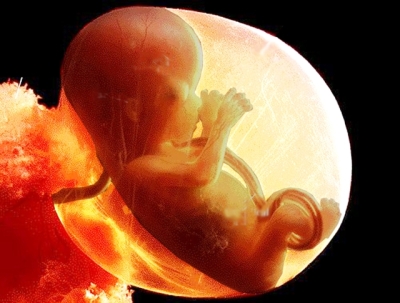The fertility industry, appearing to be pro-life on the surface is disturbingly prone to eugenic, anti-life practices and destroying life
Nancy Flanders | Live Action
The fertility industry was born out of couples’ desire to have babies despite struggles with infertility. This billion-dollar industry profits from that pain and actually destroys more lives than are born through the common process known as IVF (in vitro fertilization). In addition, the fertility industry, though appearing to be “pro-life” on the surface, is disturbingly prone to eugenic, anti-life practices.
While many well-meaning individuals believe IVF is a technology that can bless families with children, they often don’t know that an estimated 1.7 million embryos have been destroyed through the IVF process. In the United States, it is also believed that one million embryos have been frozen indefinitely. In comparison, about one million babies have been born through IVF in the U.S.
According to Co Fertility, in 2018 there were 306,197 assisted reproductive technology cycles in the U.S. resulting in just 73,831 live births. If just one embryo was transferred each cycle (usually multiple are transferred), that’s 232,366 embryos who died in the process — many of them simply because they were deemed to be unfit.
Destroying “low quality” embryos
When couples begin the IVF process, they likely aren’t thinking about all of the children they will create who will be destroyed in the lab or will be lost to miscarriage. More than 25% of women who undergo IVF have a miscarriage in their first full IVF round. It’s a heartbreaking loss to suffer, but before the embryo is even transferred to her mother’s uterus, she has likely lost siblings.
Embryos are graded on their “quality” — a particularly disturbing way to judge a human being — but the fertility industry doesn’t treat human embryos as human beings. Countless embryos are destroyed because they simply didn’t make the cut. Couples have said they had to sign contracts with fertility clinics, agreeing to allow some of their embryos to be automatically destroyed. This could include embryos labeled “aneuploid,” meaning he or she had an abnormal number of chromosomes. Embryos can be tested to see if they have a health condition such as Down syndrome or cystic fibrosis using preimplantation genetic screening (PGS) and can then be destroyed, even if otherwise healthy.
READ: ‘Leftovers’: The dehumanizing language of the IVF industry
While many couples have been convinced to destroy their embryos for being “aneuploid,” Monica Halem decided at the age of 44 to give her aneuploid embryo a chance, which was considered “unthinkable.”
“Nobody puts abnormals back in,” she said. But she had met with reproductive immunologist Jeffery Braverman, who told her that as long as the embryo was “good-looking” she should “forget the aneuploidy.” She requested that multiple aneuploid embryos be transferred. As reported by The Cut:
Aneuploid has always been a dirty word in biology, the defining trait of cells that don’t obey rules and cause problems. It has historically been the hallmark of cancer cells, which are so genetically mutinous that they proliferate as tumors and attach to distant tissues as metastases. In the setting of reproduction, an aneuploid embryo — one with either too many or too few chromosomes — can sometimes result in a child with a genetic disability; the classic example is Down syndrome, which occurs in people who have three copies of chromosome 21.
But more commonly, as one leading IVF expert put it not long ago, an abnormal embryo is simply “destined to fail” — either it won’t implant or, if by chance it does, the resulting pregnancy will almost certainly end in miscarriage.
While Halem’s embryos didn’t pass today’s standards, based on the standards prior to the development of PGS, they still had the signs of being potentially viable. So, Halem decided to go for it. When she learned she was pregnant, the fear of that baby being “abnormal” crept in and she wondered if she was going to be considering abortion. A chorionic villus sampling test revealed, however, that the baby girl was healthy and was therefore spared from a eugenic abortion.
IVF doctor Norbert Gleicher, founder of the Center for Human Reproduction in New York, believes PGS has misdiagnosed many embryos as abnormal, and that 13,000 women a year have lost the chance to have a child because their abnormal embryos were destroyed. With multiple embryos created for each woman, that’s hundreds of thousands of babies destroyed because they were labeled as non-viable when they very well may have been viable.
Weeding through embryos
Preimplantation genetic diagnosis (PGD) is used not on couples who are attempting to overcome fertility, but on couples who are fertile but want to rule out the possibility of having a child with a certain known genetic condition such as cystic fibrosis (CF).
When a couple learns, either pre-pregnancy, during pregnancy, or after the birth and diagnosis of a child, that they are carriers for a genetic condition such as CF, they are often pressured by genetic counselors, friends, family, and doctors, to stop having children naturally and opt for IVF with PGD. In doing so, the couple would use PGD in a search-and-destroy mission to ensure they do not give birth to a child with that particular genetic condition.
Their embryos would be created in the lab and the lab would test each of them for a condition such as cystic fibrosis. When one of the embryos (their child) is determined to have CF, the couple could donate that embryo to scientific research or have the embryo destroyed. Only the non-CF embryos would be deemed worthy of being transferred.
Though deemed as the compassionate thing to do by healthy individuals who think life with a health condition is an unworthy existence, this is actually modern-day eugenics. It is the weeding out of those deemed “unfit.” Healthy individuals decide that other individuals are better off not being born at all.
Though many parents choose to have children naturally despite the risk of having a second child with the same genetic condition, those parents are often labeled cruel and selfish, but the idea that a person’s quality of life is determined solely by a potential health condition is discriminatory. No one, even when born healthy, is guaranteed a life free from illness.
The Nobel Prize Sperm Bank
Another side of the fertility industry that is deep in eugenics is sperm and egg donation. LGBTQIA+ couples and single women and men sometimes turn to egg and sperm donation in order to create their desired biological child. In order to do so, they search through donor descriptions to find the person who seems to hold the most desirable characteristics.
This notion of creating “ideal” children led to the creation of the Repository for Germinal Choice, which existed to create “super-kids” using the sperm of high-achieving men. It was nicknamed the “Nobel Prize sperm bank.” The man behind the repository, Robert Klark Graham, took home the Ig Nobel in 1991 for the repository. But his plan was a eugenic one. The men were all white and were required to be married heterosexuals along with other criteria. Women were only allowed to receive the sperm if they fit the same conditions. This would create what were expected to be white, highly intelligent babies.
READ: ‘So sad and confusing’: IVF’s physical and psychological impact on children
While the bank ultimately failed, it influenced the fertility industry and changed the game so that parents could select the desired health and intelligence characteristics of their future child. London Sperm Bank, the largest in the UK, was investigated in 2015 for eugenic practices because it banned men with certain common conditions like dyslexia and ADHD.
“It’s narrowing humanity at a time when we’re starting to accept many aspects of diversity,” bioethicist Kerry Bowman told George Dvorsky for Gizmodo.
Likewise, according to CBC, egg donation advertisements tend to seek out certain demographics based on race, physical appearance, and intellect. The companies want women 5’9″ or taller with an SAT score of 1500 or higher, and athletic abilities. They must have “good genes.”
A 2020 article in The Harvard Crimson revealed that most sperm and egg donor applicants are “immediately screened out due to health-related factors and family histories, and other physical criteria like height….” At California Cryptobank, only one percent of sperm donor applicants are accepted and they can donate up to three times a week, making up to $1,400 a month for a year — meaning countless children are created from their sperm and are walking around the same communities as their half-siblings and have no idea.
This has led to situations in which biological siblings have unknowingly married each other. Many children who grow up and learn they were created with an egg or sperm donor in a lab face an identity crisis, feeling as though they are “mass-produced” products. Their possible future suffering was never a consideration for their parents or the fertility industry, yet possible future suffering is the very reason this same industry destroys countless children each year.
The fertility industry is not pro-life, despite what many pro-lifers believe. Countless lives have literally been destroyed and others emotionally scarred by the effects of an under-regulated industry that dictates who is worthy of life and who isn’t.
“Like” Live Action News on Facebook for more pro-life news and commentary!
SOURCE: LIVE ACTION





